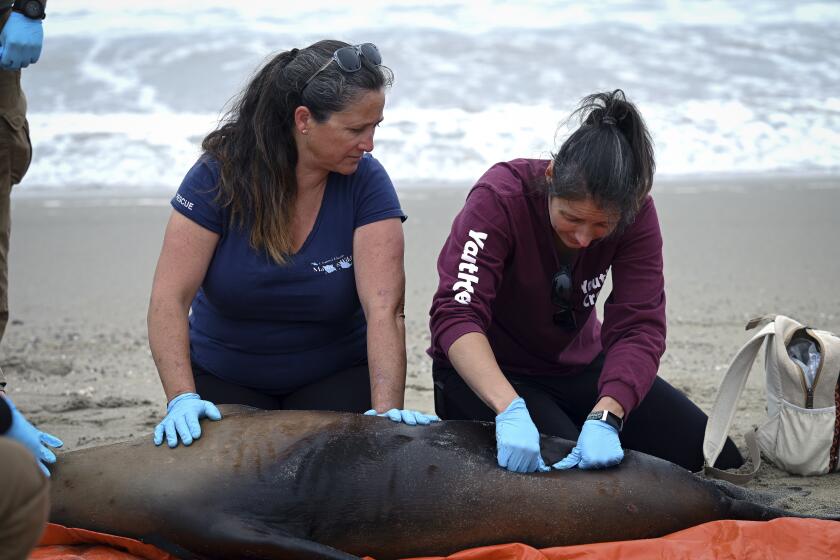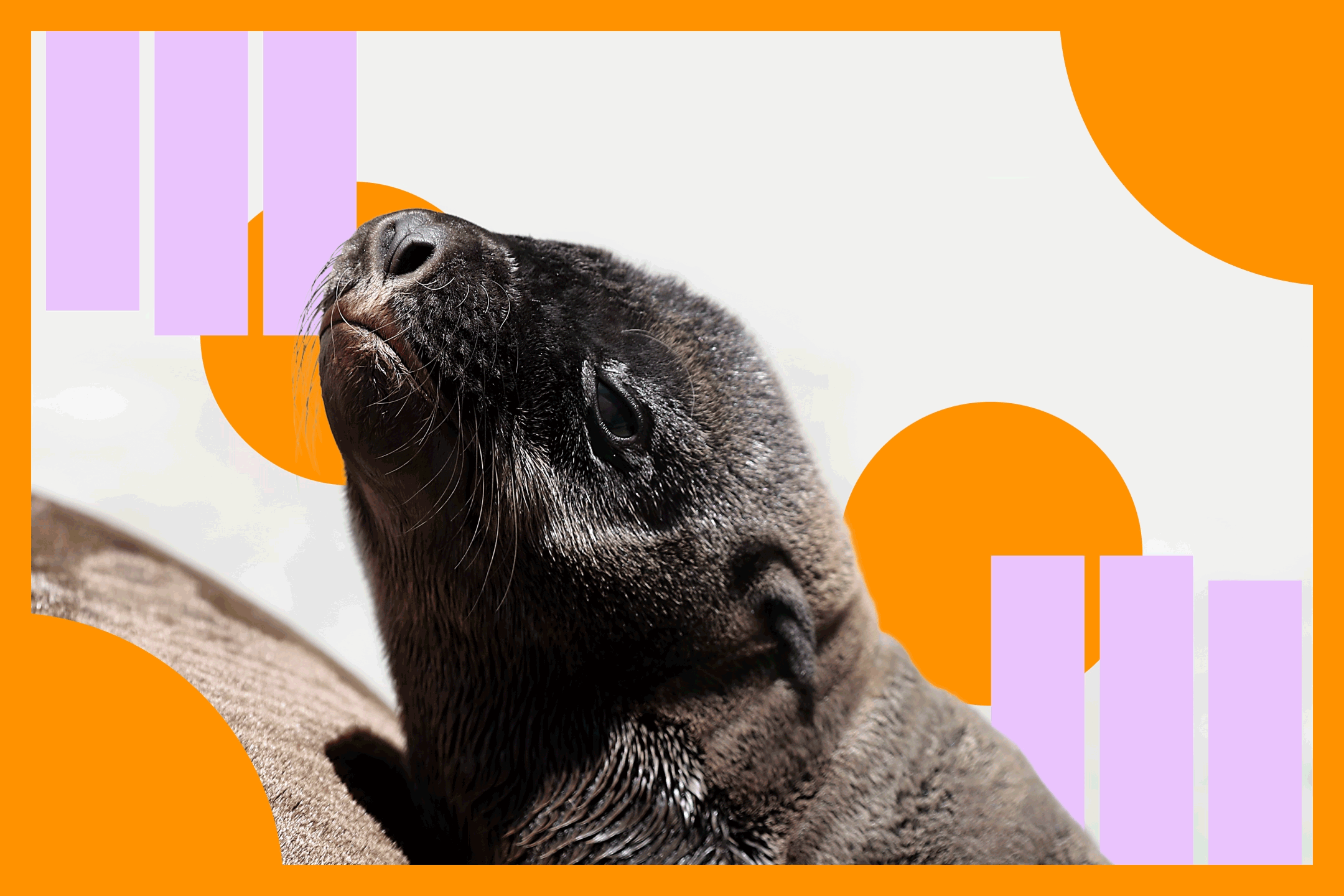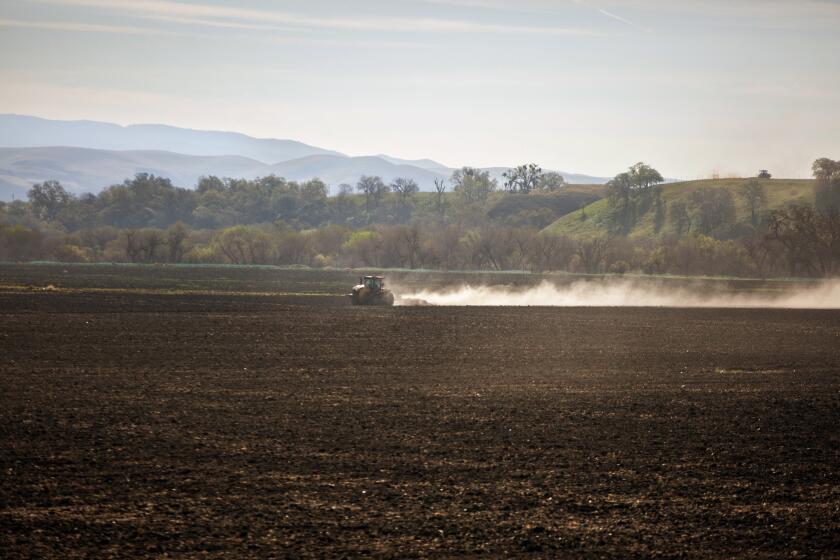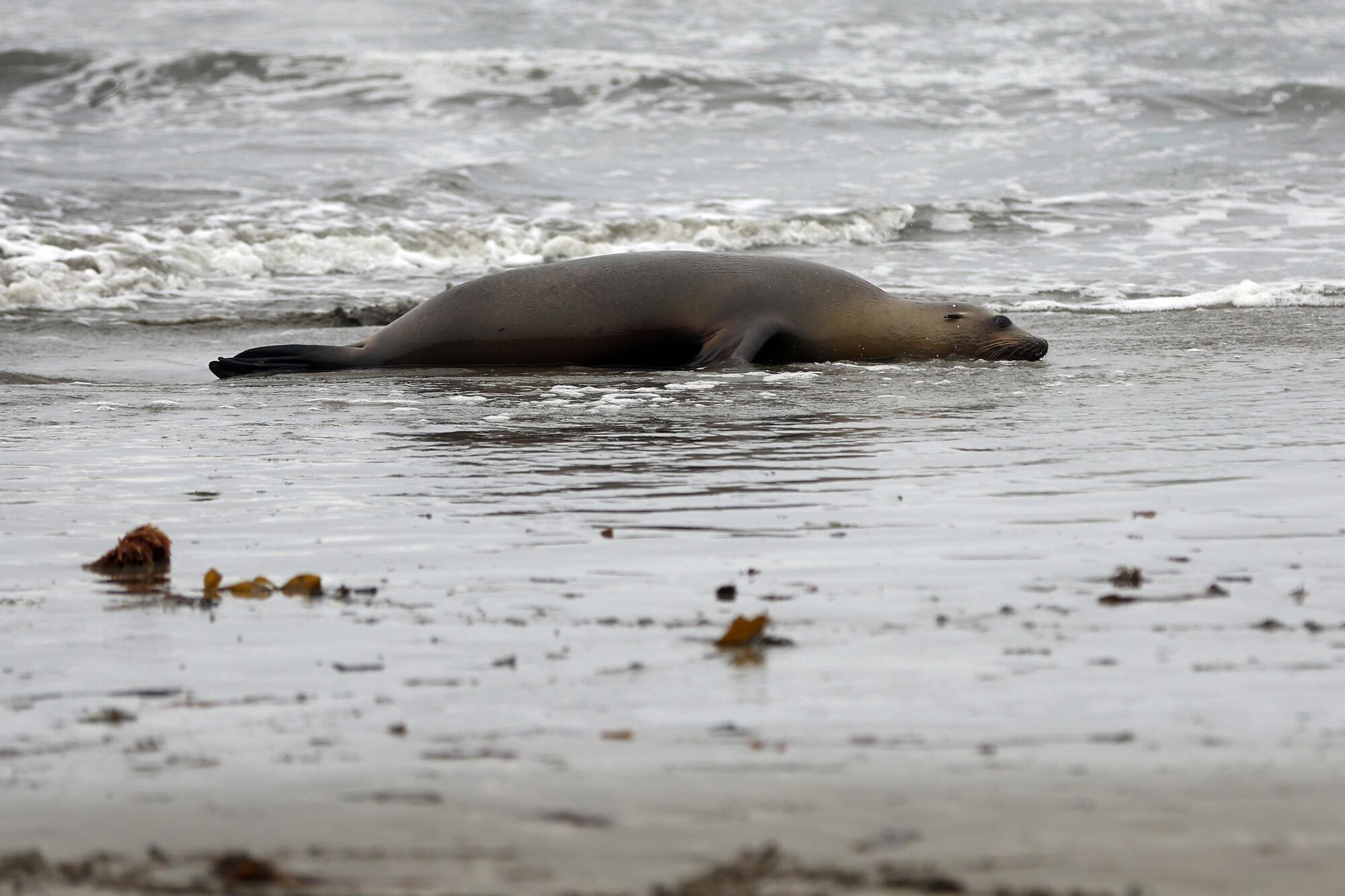
- Share via
MORRO BAY, Calif. — By the time the rescue squad got to her, a small crowd had formed around the agitated California sea lion. As the team crept toward her — carrying large wooden shields and a giant net — the animal’s head weaved, craned and rocked back and forth in frenzied rhythms.
Lucille — as she was later named by the Marine Mammal Center’s Morro Bay field office — had barely registered her captors’ approach as the team of five animal rescue volunteers pounced on her. A small struggle ensued as the creature’s body went rigid with seizures, but the team managed eventually to push her into an XXL portable dog crate.
“It’s really hard when they’re not acting like sea lions,” said Jake Roth, a 22-year-old volunteer who helped with the rescue.
The neurotoxin domoic acid is blamed for the extreme distress and deaths of many sea lions along the Central Coast, as well as the deaths of two dolphins and two seals.
It was the first of dozens of frantic rescue phone calls made by horrified beachgoers that day, as an acute domoic acid outbreak continued to wreak havoc along the San Luis Obispo and Santa Barbara coasts this summer.
“The levels we’re finding inside these animals is off the charts,” said Giancarlo Rulli, a spokesman for the Sausalito-based Marine Mammal Center. “It’s all hands on deck.”
Domoic acid is a neurotoxin released by Pseudo-nitzschia, a common phytoplankton species found in coastal waters. Sea lions — and other marine mammals — become poisoned when they eat large amounts of fish or invertebrates that have been chowing on the contaminated diatoms.
Symptoms include lethargy, vomiting, unusual behavior, seizures, loss of pregnancy and death.
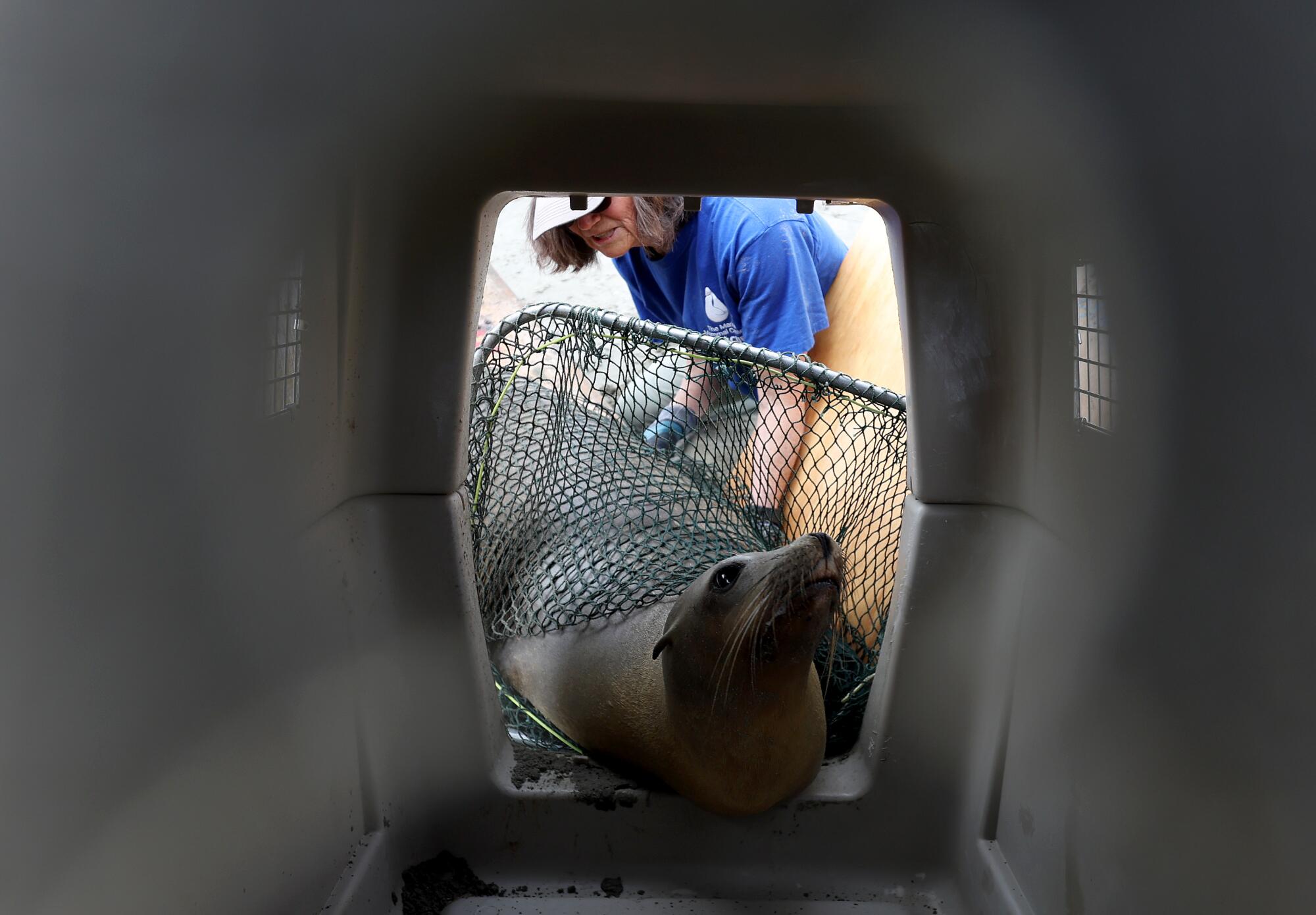
Domoic acid, which is an amino acid, is not always produced by the phytoplankton. It is only manufactured under certain conditions — ones which scientists are still trying to determine. But upwelling of seawater seems to be a common factor — and strong upwelling of cold, nutrient-rich water is currently hugging the Central California coastline.
The outbreak has been at crisis levels since late July.
“One of the things that has come out again and again in a lot of our studies... is that, yes, when you get upwelling — which is typified by colder water temperatures and lots of nutrients — you will stimulate a bloom of diatoms,” said Clarissa Anderson, director of Southern California Coastal Ocean Observing System and the Cooperative Institute for Marine, Earth, and Atmospheric Systems, which are operated out of UC San Diego’s Scripps Institution of Oceanography.
“But then the bigger question — the one we’ve not been able to totally wrap our heads around — is, when does it produce the toxin? What is the mixture of conditions that requires that? Because this organism is around all the time,” she said.
Domoic acid outbreaks are not new. They have been happening for decades, if not millennia. And although it wasn’t identified in California waters until 1991, it is believed to have been behind outbreaks before that — including the 1961 “invasion” of chaotic sea birds in Capitola that partly inspired Alfred Hitchcock’s 1963 film, “The Birds.”
What has changed, said Anderson, are the frequency, timing and location of the events.
When a sea lion is found stranded anywhere between Long Beach and Malibu, chances are the Marine Mammal Care Center will help with its rescue.
“We know that upwelling season in California has always been a great time to expect a Pseudo-nitzschia bloom and potentially a domoic acid event, and that can start as early as March,” she said. As a result, scientists had associated springtime with domoic acid outbreaks.
“But now we’re starting to see something different: These past three summers there have been these intense, long, lasting blooms,” she said.
And while Monterey and Humboldt Bay had been considered the classical hot spots, it’s Southern California that has been clobbered since 2022.
She said climate change is likely playing a role in these changes — but not necessarily because of warm water temperatures.
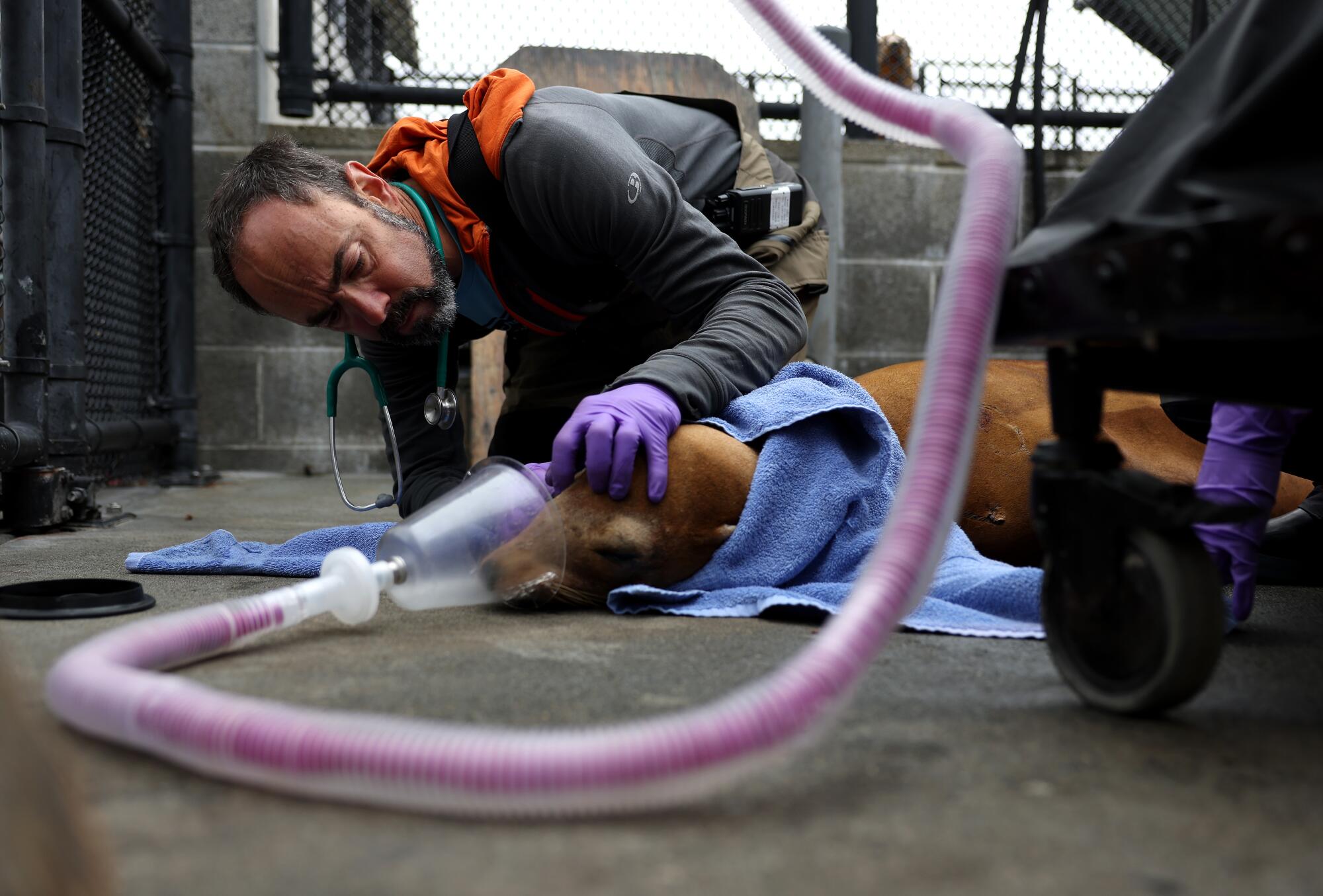
“One of the things we have seen in our years and years and years of data is that it’s the mixture of nutrients that come with upwelling that is potentially responsible for turning the toxin on or off,” she said. “And that mixture of nutrients may be impacted by global climate change, because climate change is changing ocean circulation physics at the basin scale — like the Pacific Ocean scale — and that can have ramification on what kinds of water — the flavor of water — that is upwelling onto the coast in California.”
Raphe Kudela, a professor of ocean science at UC Santa Cruz, said there might also be a connection to heat and runoff from inland rivers.
He said in the last few years, really wet winters have contributed to an increase in river runoff — and a resulting dump of nutrients into California’s coastal waters.
“So you get a pulse of upwelling, which brought some cool water with even more nutrients to the surface, and then everything warmed up. That’s just absolutely perfect conditions for a bloom like this,” he said.
It’s also a perfect recipe for creatures like sardines and anchovies, who feast on the diatoms, algae and phytoplankton in these cool, nutrient-rich waters. And those fish bring in predators, such as sea lions, dolphins, fur seals, birds and other fish that then proceed to feast on these “toxic bullets.”
Anderson said people will occasionally ask her if they, too, could get sick from eating anchovies.
“I’m like, are you planning on eating as many anchovy as a sea lion?” she said, noting that sea lions eat roughly 5% to 8% of their body weight per day. For a 150-pound person, that would be 7.5 to 12 pounds of anchovy.
Health officials are alerting Lightning in a Bottle attendees of the potential for valley fever. Five people have been diagnosed; three were hospitalized.
And that’s part of the tragedy of this latest outbreak.
Barbie Halaska, a necropsy specialist with the Marine Mammal Center, showed visitors the milk-rich tissue enveloping the single six-inch incisions she had made in the chests of six of the dead sea lions that had died at the Morro Bay center.
All six were adult, lactating females, she said, with thick layers of fat.
“You can see how big she is. She’s gorgeous,” said Halaska, pointing at the dead but otherwise healthy-looking animal. “They’ve got a great food supply. It just happens to be tainted. When they’re lactating, and they find a good food stock, they just go and go and go. Unfortunately, that means the neurotoxin just bioaccumulates.”
She said female sea lions tend to give birth around June 15 — “we call it sea lion birthday” — which means these females most likely had a young, dependent pup with them before they were stranded. Sea lion pups are dependent on their mothers until they are about 9 months old.
Research shows that pups growing inside contaminated pregnant females suffer brain damage. Milk from contaminated females also carries the toxin, suggesting it could be transmitted to pups.
By early afternoon, Lucille and three other sea lions were being treated for domoic acid poisoning.
Lucille was passed out, snoring on the cement floor of the pen. Soon after she arrived, a center staff member had delivered a shot full of phenobarbital and midazolam into her back haunch, to control the seizures. Staff then hooked her up to an IV bag of fluid to help flush the toxin out of her body.
But one of the three newer arrivals, a large, adult female named Yippee, arrived with a broken and dislocated jaw. Staff concluded she’d die if she was returned to the wild. They made the hard decision to medically euthanize her.
She struggled to flee from the small team that came in to deliver the shot, but was finally backed into a corner and succumbed. Her breathing slowed and within a few minutes, she was still.
Rulli said such episodes are always painful, and the center works hard to support staff who respond to these events. Repeated encounters with suffering animals can take a toll.
Happy ‘California Panda Day!’ San Diego Zoo welcomes first new pandas to enter the U.S. in more than 21 years.
Roughly 30% of the animals that have come to the center in this latest outbreak — which began at the end of July — have died, said Aliah Meza, operation manager of the Morro Bay field office.
Farther south, where staff from the Channel Islands Marine Wildlife Institute are responding to animals along the Santa Barbara and Ventura coasts, the number exceeds 50%, said Sam Dover, founder and chief veterinarian of Channel Islands Marine and Wildlife Institute.
To keep these facilities running and these teams operating, both institutions rely on donations and some level of state and federal funding.
State funding was nearly pulled last year when the governor’s office struck $2 million in funding from the state budget. For smaller operations, such as Dover’s, that would have been a 50% hit on their operating budget. The groups were able to convince lawmakers to replace the funding.
“I don’t envy the sharpened pencil and eraser work that they were doing,” said Jeffrey Boehm, the marine center’s chief external relations officer, who said he and others went to Sacramento to make the case that their work is in the public interest. “Having an entity that is prepared, skilled and professional to respond to wildlife that might be having a seizure on a public beach, that’s in the public interest. As is the science we advance through doing this work... Because at the end of the day, it’s all just one system.”
Lucille, who recovered from her seizures, was transported to the center’s Sausalito hospital via air-conditioned truck the following day. She died in transport.
Veggie, another sea lion who was rescued the same day, did make it to Sausalito however. She is now undergoing a seven-day protocol at the hospital, where roughly 50 other sea lions are being treated.
Rulli said that two sea lions were recently released back into the wild at Point Reyes National Seashore, where there is no sign of an outbreak and where humpback whales are currently feeding — an indication that there’s plenty of food available.
“Let’s just hope they stay up here,” he said.

